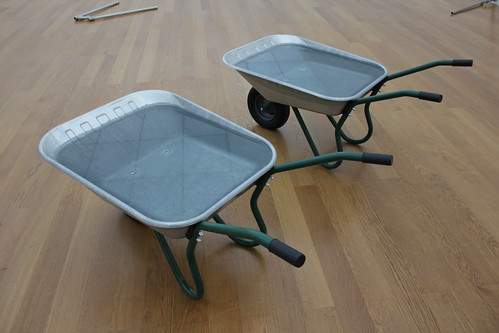Bill Bollinger. The Retrospective at Kunstmuseum Liechtenstein in Vaduz is the first major retrospective of the work of the American artist Bill Bollinger (1939-1988). In the late 1960s, Bill Bollinger was one of the foremost sculptors of his time. The exhibition presents more than thirty of his sculptures, works on paper, unknown documents, and a video. In this video we have a look at the exhibition, and the curator of the exhibition, Christiane Meyer-Stoll, talks about the person and career of Bill Bollinger, the starting point and concept of the exhibition, and the essence of his work.
In the late 1960s, Bill Bollinger was mentioned in the same breath as the likes of Bruce Nauman, Robert Smithson, Eva Hesse and Richard Serra. He participated in all the famous exhibitions, such as the legendary “When Attitude Becomes form” at the Kunsthalle Bern in Switzerland, and “Anti-Illusion: Procedures/Material” at the Whitney Museum of American Art. But by the mid-1970s, he had withdrawn completely from the international art scene, due to personal problems, including a prolonged custody battle. He cut his ties with New York City, and died of alcoholism in 1988, at 48. Soon, his name was all but forgotten.
Bill Bollinger: The Retrospective (Die Retrospektive) at Kunstmuseum Liechtenstein, Vaduz. Walkthrough and Introduction by curator Christiane Meyer-Stoll, February 10, 2011.
> Right-click (Mac: ctrl-click) this link to download Quicktime video file.
From the press release:
A typical hallmark of Bollinger’s work is his subtle and sensitive treatment of even the simplest, industrially produced materials. His use of aluminium tubing, cables, hosepipes, wire mesh, lamps and wheelbarrows was as radical and direct as it was elegant.
Having studied aeronautical engineering at prestigious Brown University, Rhode Island, Bollinger later turned his attention to painting and embarked on a career as an artist. In the late 1960s, at the height of the space race, he was creating sculptures that explore the gravity, balance and specific properties of a wide variety of materials. The cosmos and water are key elements in the work of Bollinger, who was fascinated by curved space, the vertical and the horizontal, resulting in evanescent, purist, energy-laden works with a radical edge that still have the power to astound us, even today.
Inspired by a transatlantic crossing on a freighter from New York to Europe in 1968, during which he perceived the ocean as a slightly curved and seemingly planar expanse with a sharply defined horizon, Bollinger continued to consolidate and intensify this deep-rooted fascination, creating works in which water plays a crucial role: transparent tubing filled with water arranged in a line, a circle or interconnected configurations. In one work, in which seven painted drums are linked by plastic hosepipes that maintain equal water levels, the sculpture takes on an ornamental, floral quality.
This first major retrospective exhibition, curated by Christiane Meyer-Stoll in conceptual collaboration with Rolf Ricke, is a joint production by the Kunstmuseum Liechtenstein, the ZKM Zentrum für Kunst und Medientechnologie Karlsruhe, where it will subsequently be shown, and The Fruitmarket Gallery, Edinburgh.




